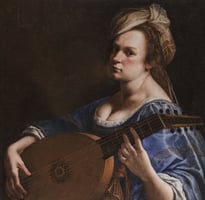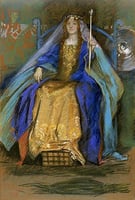Artemisia Gentileschi is an Italian Baroque painter and one of the most famous female artists of...
Celebrating the Life and Work of Gian Lorenzo Bernini, Master of the Baroque Art Movement
Gian-Lorenzo Bernini is one of the most celebrated artists of the Baroque period. His sculptures, architectural designs, and paintings have left a lasting impression on the art world and continue to be admired centuries later. Born in Naples, Italy in 1598, Bernini was the son of a renowned sculptor and was trained in the art of sculpture from an early age.
His works were renowned for their skillful use of light and shadow, creating a sense of realism and emotion that had never been seen before. Bernini's first major commissions came from Pope Paul V in 1605, when he was only seven years old. He created a fountain for the pope's gardens, the first of many fountains he would create throughout Rome.
He went on to create a number of other sculptures and monuments, including the famous Fountain of the Four Rivers in the Piazza Navona and the Ecstasy of Saint Teresa in the Cornaro Chapel. He also designed the colonnade surrounding St. Peter's Basilica and the piazza in front of it. Bernini's works are renowned for their ability to convey emotion and movement, and his sculptures often featured dramatic poses and facial expressions. He used light and shadow to create a sense of depth in his sculptures, and his skillful use of marble and other materials made his works look almost alive.
His works also often featured elements of mythology, such as the Triton Fountain, which featured a sea god riding a dolphin. In addition to his sculptures and architectural works, Bernini was also a talented painter. He created a number of portraits and religious paintings, most notably the altarpiece in St. Peter's Basilica. His paintings were renowned for their use of dramatic composition and color, and his skillful use of light and shadow.
Gian-Lorenzo Bernini's works remain popular today, and his influence on the art world can still be seen in the works of contemporary artists. His skillful use of light and shadow, his ability to convey emotion, and his mastery of marble and other materials make him one of the most celebrated and influential artists of the Baroque period.



